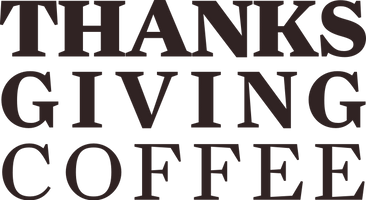Flor de Jinotega —
Two Decades in the Making
 The story of how Flor de Jinotega got its name begins back in 1985, thirty-five years ago. Unknown to me back then, this coffee we now call Flor de Jinotega was an unknown coffee of dubious quality. It was unnamed as well as unknown. How could it be known when back then, coffees had few if any Appellations. As a roaster, you purchased coffees by country of origin and if lucky, your Broker/importer had discovered a region within that country that produced superior beans. But to ask for anything more specific was beyond the sophistication of the producers and their infrastructure which had no way to produce what we today call “micro-lots” or smaller quantities of very site-specific coffee farms. Although today we take micro-lots for granted, and from every producing country, there was a time when that was not even thought about, and why Flor de Nicaragua did not exist.
The story of how Flor de Jinotega got its name begins back in 1985, thirty-five years ago. Unknown to me back then, this coffee we now call Flor de Jinotega was an unknown coffee of dubious quality. It was unnamed as well as unknown. How could it be known when back then, coffees had few if any Appellations. As a roaster, you purchased coffees by country of origin and if lucky, your Broker/importer had discovered a region within that country that produced superior beans. But to ask for anything more specific was beyond the sophistication of the producers and their infrastructure which had no way to produce what we today call “micro-lots” or smaller quantities of very site-specific coffee farms. Although today we take micro-lots for granted, and from every producing country, there was a time when that was not even thought about, and why Flor de Nicaragua did not exist.

The One street in the City Central Market: Dirt street, mountains all around it.
Then, in 2000 I introduced the concept of Micro-Specialty lots to the Specialty Coffee Trade by creating a Cupping Laboratory Project which received a $400,000 USAID Grant to build nine cupping labs in Nicaragua, one of which was to be in Jinotega. Before 2000 it was unheard of for small scale coffee farmers anywhere in the world to have access to a coffee tasting laboratory where they could bring their coffee for flavor evaluation.
Family farms are not Plantations, but small scale “fincas”. Eighty-five percent of all coffee harvested is grown on small family farms of 10 acres or less.
In Rwanda, the average coffee farm is one acre and the average family size is nine! All beside the point but when you think about the last 300 years of the coffee Marketplace, supporting a system where only the buyers have the ability to assess value based on flavor quality, where does that leave the farmers? It leaves them at a terrible disadvantage would be the proper answer. How could they negotiate price if they had no knowledge of the quality of the fruits of their labor? The fix was in and it had been since coffee began to be traded 500 years ago in the Western Hemisphere.

The Local Coffee Market where farmers get quick cash for their beans.
Knowing that they lacked the knowledge and skill-sets to evaluate their coffee and that was compounded by the fact that the “Cupping Labs” where quality was evaluated, were in the hands of the government, large Plantation owners, and the exporters. I suggested in my speech that day to the 300 coffee farmers and Coffee Cooperative leaders that they should build labs so they could partner with the newly emerging worldwide coffee quality revolution.

Inside a coffee stall on Coffee Street: A family affair.
In the audience that day was the “Chief of Party” (on his business card) of USAID, The United States Agency for International Development. He came up to me as I left the stage and said,
“That cupping lab idea is a good one, here is my card. Write up a proposal for building them and let’s get them happening”.
I figured it was just another bullshit bureaucrat who was just doing his job, being in good form. But I wrote the proposal and got it to him AND a year laterThanksgiving Coffee Company had a $400,000 grant to build nine cupping labs in Nicaragua, all at small scale farmer cooperatives. I can say the rest is history, but the story gets better because the Project was to start the year I was to become President of the SCAA and have the loudest Bully Pulpit in the coffee industry.

The labs were revolutionary. They gave the farmers power. The power of knowledge. Curiosity took charge. Pent up desires to know, dampened by centuries of futility, oozed out slowly at first, but soon, exploded into the fast lane of the US and European coffee demand for quality flavor. By 2002, the SCAA was 20 years old and had defined quality, developed a language to describe the coffee flavor quality, and scoring system to quantify it.
>br>So now, for the first time in 500 years, the coffee farmers who had been cut out of the market by Power and greed were playing on a level playing field. It was quick. The Co-op leaders built beautiful labs with local wood and stone. I was operating under the idea that “If you build it they will come!”. Coffee buyers like to taste or “cup” coffees in a lab where they can apply the known standards and methodology of the twenty-first century. The rest of the story is all around us. Coffee of fine quality is almost everywhere because they built them and they did come.

Local Health Clinic. That’s me in the background with the yellow hat.
Coffee buyers and roasters big and small, came to professionally cup coffees, side by side to learn from each other and form new, or strengthen old relationships for mutual benefit. The labs had jobs, they became hubs, and records were kept and buyers had to be received and coffee had to be sold; somebody had to have the keys.
Roasters began to work directly with individual farmers or specific co-ops of the nine that were built, all in the quest for the Holy “Cup of Excellence” award now a part of the Direct Trade movement, known by coffee “insiders” as “The Third Wave”.
It was this third wave of coffee roasters that began to look for hidden diamonds among the many beautiful but lesser coffees. First, they looked for the flavor gems as adventurers would look for the moment. But soon the wave began to find each other and the idea of “Micro-lots” (small amounts of green coffee diamonds that were “discovered”). And here is where Flor de Jinotega comes in.

Coffee pickers bringing in their day’s work.
Flor de Jinotega (flower of Jinotega) is a coffee produced by a small scale coffee cooperative known by the acronym, SOPPEXCCA in the growing region located in the Northcentral region of Nicaragua. The farms are located in the mountains surrounding the city of Jinotega. SOPPEXCCA was one of the original nine cooperatives to build a cupping lab and begin the long hard journey to quality.
The cupping lab provided the tools to begin the process of evaluating each member’s coffee and thus were able to separate the coffees they produced by quality, eventually creating a coffee profile unique to the Jinotega Appellation.
We were there with them from the beginning, buying their coffees and providing feedback to them about the results of their efforts and paying them more as the quality improved over the years. This is the 20th year and these coffees we are presenting you today reflect two decades of our work together. They are the ultimate reflection of our collaboration and you might say, they are both a micro-lot and a perfect example of the value of Direct Trade.
Postscript.
In 2006 I returned for again to Jinotega to visit my friends at SOPPEXCCA and to cup coffees at their professional lab and cupping table. While there, I took these photos of life in a coffee town in the Mountains. Not much has changed in the 14 intervening years so here is a look at life in that part of the world.

Street food- yams, chicken on a stick, rice, gallo pinto. Absolutely delicious!


Jinotega Canines.

The Saddle Shop; the wild west still exists in Jinotega.

Street Dog



